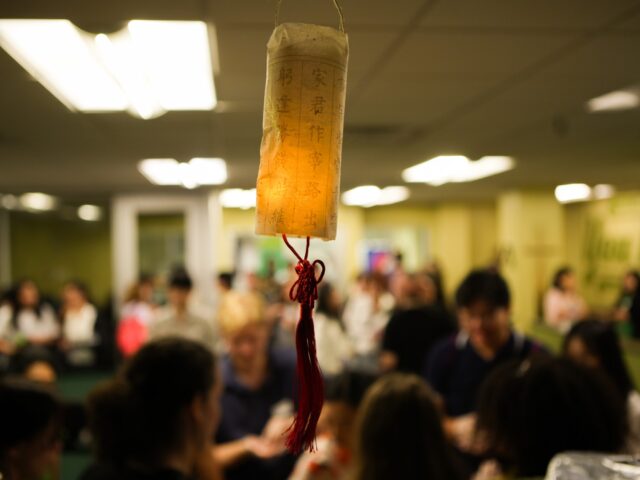By Arden Berry | Staff Writer
For Thanksgiving, students will join friends and family to celebrate with food, family and expressing gratitude. Students and professors with international backgrounds have a variety of other holidays to celebrate the fall season, whether on campus or in another country.
According to a guide from Case Western Reserve University, several Southeast and Northeast Asian countries celebrate the Mid-Autumn Festival, also known as the Autumn Moon Festival, on the 15th day of the eighth lunar month, which falls either in September or October in the Gregorian Calendar.
The Baylor Vietnamese Student Association hosts an Autumn Moon Festival celebration annually. This year, they hosted it Nov. 7.
Sugar Land junior and Vietnamese Student Association External Vice President Emily Nguyen said the Mid-Autumn Festival, like Thanksgiving, celebrates being with family and involves eating certain food.
“I would say mooncakes are the predominant one,” Nguyen said.
Nguyen said the main event of the campus celebration is lantern lighting, which acts as a bonding activity as well.
“They’re basically ready-to-make lanterns,” Nguyen said. “We would light them up at night and it would just be a really wholesome time because all the lanterns would light up and then there would be a full moon and it would just be really pretty.”
Other global fall holidays focus on expressions of gratitude. Cindy Jones, senior lecturer in German, said the German event Erntedankfest has a primarily religious background.
“We call Thanksgiving ‘Erntedank,’ which literally means ‘thanks for the harvest,’” Jones said. “It is really something where people give thanks for a good harvest, which means primarily we find these celebrations in more rural areas.”
Jones said Erntedankfest involves a church celebration on the first Sunday in October and often includes beautiful displays of art.
“When I grew up, for instance, our church had these huge mosaics made out of different-colored lentils, corn and things like that,” Jones said.
Jones highlighted how communities also hold a parade on the day that correlates with the harvest.
“You have these parades with tractors; you got to think huge John Deere’s going through the cities, and they are decorated like floats,” Jones said. “Think of the Baylor Homecoming Parade; they’re decorated with fruits and vegetables.”
Jones said schools have themed arts and crafts for the children, the churches decorate — sometimes with bread and a crown made of wheat — and both collect money.
“A lot of times when we celebrate this bounty that has been bestowed upon us, this is also the time where people usually collect money for the less fortunate,” Jones said. “So that is something where you want to show your generosity, especially after you’ve had a good harvest.”
While Jones said Erntedankfest is celebrated locally, St. Martin’s Day — another fall German holiday — has celebrations in Texas areas with large German communities.
“We have big parades where people reenact the scenes of this legend with St. Martin, and the kids are basically walking behind this guy on a horse who acts like Martin with their little lanterns,” Jones said.
Emmanuella Amoh, assistant professor of history with a specialization in Ghana, said West African countries, including Ghana, Benin, Togo and Nigeria, celebrate the Yam Festival.
Celebrations differ by ethnic group. For example, Ewe people celebrate the Asogli Yam Festival by cooking the yam, mixing it with red oil, adding eggs, then giving up the first harvest to the gods. From there, the community gathers to eat yam meals.
Amoh said the event has spiritual and secular aspects, but the primary focus is on the community. She said the Ashanti Yam Festival involves a spiritual cleansing but also eating and dancing.
“It is social, religious at the same time, social in the sense that it brings the community together,” Amoh said. “Whether you’re a Christian, a Muslim or a traditionalist, this is something that brings us all together.”
Whether it’s eating turkey in the U.S., lighting lanterns on campus, watching a harvest parade in Germany or cooking yams in Ghana, communities near and far celebrate their harvest and community throughout the fall season.
“It is unique, and it’s beautiful in its own way,” Amoh said. “It doesn’t have the the commercialization of the season as you see in the United States … but there’s a lot of enjoying and then being grateful and thanking God, recognizing the role that God played or the spiritual impact on your life.”


